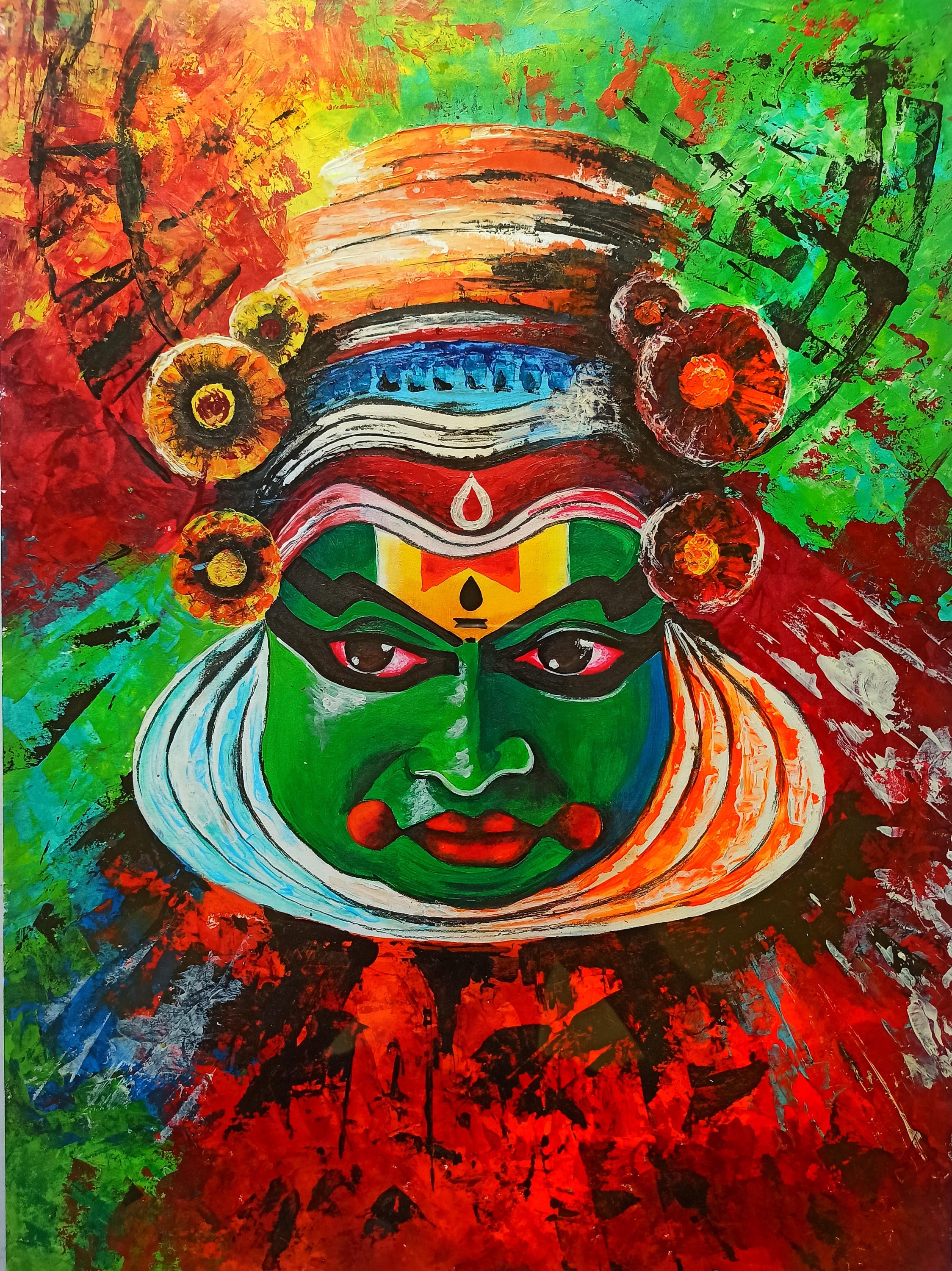
Famous Sculptures In India Different forms of arts for definitions masterpieces of asian art
Hinduism continued to be a main focus of Indian art for centuries, as sculptures of deities like Shiva were commonly produced. By the 16th century, Islam gained importance under the Mughal Empire and art production grew under Islamic rulers. During this time, the arts prospered and in 1631 construction began on the Taj Mahal.

Indian Art and Its Vibrant History Invaluable
Indian art consists of a variety of art forms, including painting, sculpture, pottery, and textile arts such as woven silk.Geographically, it spans the entire Indian subcontinent, including what is now India, Pakistan, Bangladesh, Sri Lanka, Nepal, and at times eastern Afghanistan.A strong sense of design is characteristic of Indian art and can be observed in its modern and traditional forms.

Kathakali Painting Print South Indian Art Print Indian Etsy New Zealand
Tanjore painting drew inspiration from Indian art of the 16 th century, when the Vijayanagara Rayas administered their vast kingdom in southern India through the Nayaka Governors. The Nayakas were great patrons of art and literature. In 1676, Maratha rule was established in the region, and Maratha rulers encouraged the flourish of art and artists.

Pin on beautiful sculptures /idols of Hindu Gods and Goddesses
South Indian culture is a rich tapestry woven with vibrant traditions, art forms, and customs that have evolved over centuries. Encompassing states such as Tamil Nadu, Kerala, Karnataka, Andhra Pradesh, and Telangana, South India boasts a distinct cultural identity. Known for its classical music, dance forms like Bharatanatyam and Kathakali.

India's Meenakshi Temple are an explosion of vibrant shades and 33k sculptures Daily Mail Online
South Indian culture refers to the cultural region typically covering the South Indian states of Tamil Nadu, Karnataka, Kerala, Andhra Pradesh, and Telangana. The idea of South India is closely linked to the Dravidian ethnic and linguistic identity and therefore it can also refer to groups in central India such as the Gondi and the Kui.

Hanuman sketch for making sculpture south indian style Hindu god B Pinterest Hanuman
Home Visual Arts Medieval Indian sculptures: southern India The medieval phase in southern India opened with elegant 7th-century sculptures at Mahabalipuram, by far the most impressive of which is a large relief depicting the penance of Arjuna (previously identified as an illustration of the mythical descent of the Ganges).

Famous Stone Sculptures Of Khajuraho Stock Photo Download Image Now Ancient, Architecture
Find the deal you deserve on eBay. Discover discounts from sellers across the globe. We've got your back with eBay money-back guarantee. Enjoy Indians statues you can trust.

Pin on Indian Apsaradarpana(Beauty looking in the mirror)
Indian sculpture On the Indian subcontinent, sculpture seems to have been the favoured medium of artistic expression. Even architecture and the little painting that has survived from the early periods partake of the nature of sculpture.

In the midst of the neverchanging, the stable, the permanent, there is the ever changeful, the
The Sculpture of India assembles 100 works spanning four millennia in an effort to clarify and focus the achievements of India's artistic tradition. The objects chosen range from the middle of the third millennium BC to approximately the 14th century AD, when vigorous foreign influence from Iran and central Asia imbued much of the Indian art that followed with a character that distinguished.

Chola Dynasty, Asian Sculptures, Southeast Asian Arts, Indian Gods, Indian Art, American
Sculpture Art is probably one of the oldest art forms to exist, rooting itself as a widespread practice even in the ancient Indus Valley Civilisation (c.3300-1300 BCE) as well as the ancient Mesopotamian period (c. 3100 BC- 539 BC). In the context of the Indian subcontinent, sculptures remained a significant part of documenting life.

Pin by aus alkhafaf on F sculpture Ancient indian art, Hindu art, India art
South Asian arts - Indian Sculpture, Relief, Northern, Central India: Among the most important, and perhaps the earliest, remains in northern India are reliefs from the great stupa at Bharhut, dating approximately to the middle of the 2nd century bce. The work, suggesting a style imitating wooden sculpture, is characterized by essentially cubical forms, flat planes that meet at sharp angles.

Sculpture of Kali, circa 11th century CE, Tamil Nadu, housed in the Chatrapati Shivaji Maharaj
It is generally done on cotton fabric and it involves a twenty-three steps process. The Kalamkari art form is widely used on sarees and ethnic wear and is very popular. 5. Gond Painting Image-Roboture/Flickr. This art form is Indian folk and tribal art. They are practiced by the people of the Gond community in Madhya Pradesh.

10 Of The Most Intriguing Temple Art Forms Of India Rajasthan Studio
Raqs Media Collective. Jeebesh Bagchi (B. 1965, New Delhi), Monica Narula (B. 1969, New Delhi), and Shuddhabrata Sengupta (B. 1968, New Delhi). All live and work in New Delhi. Raqs Media Collective, frequenters of the world's major institutions, are equally adept artists, curators, editors, and researchers.

Animation Illustration Art Book Review Treasures of South India தென்னாட்டு செல்வங்கள்
Get access to our ever growing library of fonts, graphics, crafts and more. Premium Crafting Fonts, Graphics & More

Pin on indian art & architecture
t e Sculpture in the Indian subcontinent, partly because of the climate of the Indian subcontinent makes the long-term survival of organic materials difficult, essentially consists of sculpture of stone, metal or terracotta.

Kalamkari Traditional Penmanship Art Work Of South India CulturallyOurs Ancient indian art
The south Indian Bronze Sculpture was highly influenced by Shaivism. It is because, in the early ages, Shaivasim was one of the main sects in Hindu religion. The south Indian metal sculptures were predominantly made of bronze with a large copper content. The canons of proportion were similar to that of the Buddhist sculptures of Southern part.